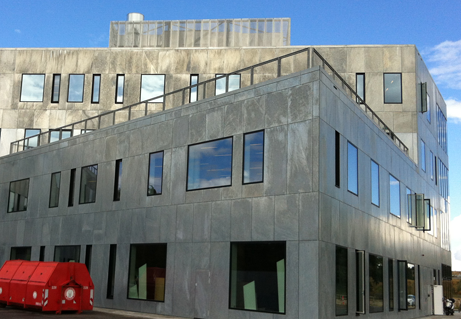
The Role of Galvanized Profiles in Architectural Designs
In modern architecture, the use of galvanized profiles has become an essential element in both structural integrity and aesthetic appeal. Galvanized profiles, with their robust corrosion resistance and versatile applications, have revolutionized architectural designs across various industries. In this blog post, we will explore the importance and growing role of galvanized profiles in architectural projects, and how they are shaping the future of design.
What Are Galvanized Profiles?
Galvanized profiles are steel sections coated with a layer of zinc to provide enhanced protection against corrosion. This protective coating extends the lifespan of the steel, making it suitable for both indoor and outdoor applications. The profiles come in various shapes, such as C, U, L, Z, and flat profiles, allowing architects and designers to use them for a wide range of structural and decorative purposes.
Durability and Longevity in Architectural Designs
One of the main reasons galvanized profiles are favored in architecture is their exceptional durability. These profiles are resistant to rust, corrosion, and the wear and tear caused by environmental factors.
- Weather Resistance: Galvanized profiles can withstand harsh outdoor conditions, including extreme temperatures, humidity, and UV exposure, making them ideal for building facades, roofing, and structural supports.
- Long Lifespan: The corrosion-resistant properties of galvanized profiles ensure that they last longer than many other materials, reducing the need for frequent repairs or replacements, which is a significant advantage in architectural projects.
Versatility in Design Applications
Galvanized profiles offer remarkable versatility, making them suitable for a broad range of architectural applications. Architects and designers are increasingly using galvanized profiles in both structural and aesthetic elements of buildings.
- Structural Framework: Galvanized profiles are widely used in the framework of buildings, including steel frames, roofing systems, and reinforcement bars. Their high strength-to-weight ratio allows for the creation of strong, yet lightweight structures.
- Aesthetic Elements: Beyond functionality, galvanized profiles are used in architectural design to enhance the visual appeal of a building. They can be shaped into custom designs for decorative elements, creating striking facades, modern facings, and eye-catching architectural details.
Eco-Friendly and Sustainable Option
Sustainability is a key consideration in modern architecture, and galvanized profiles are increasingly being recognized for their eco-friendly attributes.
- Recyclability: Both the steel and zinc used in galvanized profiles are recyclable, reducing the environmental impact associated with material waste.
- Low Maintenance: The long lifespan and durability of galvanized profiles mean less maintenance is required, further reducing the environmental footprint of buildings. The need for fewer replacements and repairs also contributes to the sustainability of the design.
Aesthetic Appeal: Combining Strength and Style
Galvanized profiles not only provide structural support but also contribute significantly to the aesthetic appeal of a building. The sleek, metallic finish of galvanized profiles adds a modern, industrial look to architectural designs.
- Industrial Aesthetics: Many contemporary architectural styles embrace the raw, industrial look, and galvanized profiles help achieve this visual effect. From exposed structural elements to decorative details, galvanized profiles create an urban, sophisticated appearance.
- Customizable Finishes: Galvanized profiles can be powder-coated or painted in various colors, allowing architects to match the profiles with other materials and color schemes in the building design.
Innovative Architectural Designs with Galvanized Profiles
Galvanized profiles are paving the way for innovative designs in both residential and commercial architecture. The adaptability of galvanized profiles enables architects to experiment with bold, creative forms and sustainable solutions.
- Complex Geometries: Galvanized profiles are ideal for creating complex geometric shapes, curved structures, and facades with intricate details.
- Integration with Other Materials: Galvanized profiles are often used in conjunction with glass, wood, or concrete to create unique contrasts in architectural designs.
Cost-Effectiveness for Large-Scale Projects
Architectural designs, particularly large-scale commercial or public infrastructure projects, often require cost-effective materials without compromising quality. Galvanized profiles offer a perfect solution, combining durability, versatility, and affordability.
- Affordable Maintenance: The low maintenance requirements and long lifespan of galvanized profiles reduce overall project costs in the long term, making them a cost-effective choice for architects and developers.
- Efficient Production: Galvanized profiles can be manufactured and customized in bulk, making them an efficient and economical choice for large-scale architectural projects.
Galvanized Profiles in Modern and Historical Architecture
The use of galvanized profiles is not limited to modern architecture. They are also being used in the restoration and renovation of historical buildings. The ability to combine traditional architectural styles with modern materials allows for a seamless integration of galvanized profiles into both new and old structures.
Conclusion
Galvanized profiles have solidified their role in architectural design as a versatile, durable, and cost-effective material. Whether used for structural purposes or aesthetic appeal, galvanized profiles enhance the performance and look of architectural projects, while also contributing to sustainable construction practices. As the architectural world continues to embrace innovation and functionality, galvanized profiles will undoubtedly remain a key player in the design and construction of future buildings.
If you’re an architect or designer seeking reliable, stylish, and sustainable materials for your projects, galvanized profiles should be at the top of your list.